Bettas or Siamese Fighting fish are beautiful creatures that come in a wide range of colors, patterns, and tail types. It’s little wonder that these gorgeous fish have such an enthusiastic following worldwide!
So, which type of betta is best? How do I identify my betta fish? And which betta is the most expensive?
Read this guide to learn about the different types of betta fish and more!
Types of Betta Fish
There are so many different types of betta fish to choose from; picking the right one for you can be a challenge!
Bettas are generally separated by fin and tail types, so let’s dive in and explore that further.
Betta Fin and Tail Types
Male bettas stand out from other aquarium fish thanks to their flowing tails and fancy finnage.
Long Tail Bettas are Different Than Short
All fish, including bettas, have several different kinds of fins around their body, which are used to swim and maneuver underwater.
Some betta varieties have been chosen and interbred to produce fish with longer, wider, or fancy-shaped fins.
Why Don’t Wild Bettas Have These Traits?
Although they look beautiful, those trailing, flowing tails are a definite handicap when it comes to swimming, making the fish slow and somewhat clumsy. Clearly, that’s no use for hunting, chasing off intruders, or escaping from predators.
So, wild bettas have shorter fins and tail shapes, and strong, powerful bodies that equip them better for life in nature.
Betta Tail Types
Here are the betta tail types you can find today.
Crown Tail
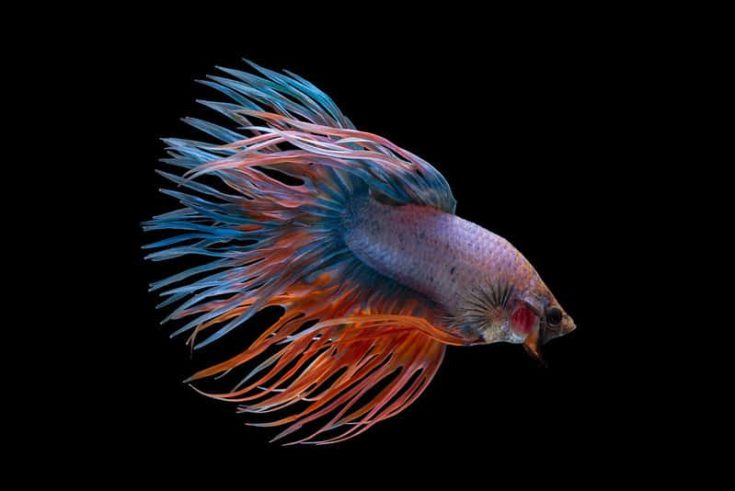
Crown Tail bettas have webbing that doesn’t extend for the full length of the fins, giving the fish’s tail a spiky, upside-down crownlike appearance.
Combtail Betta
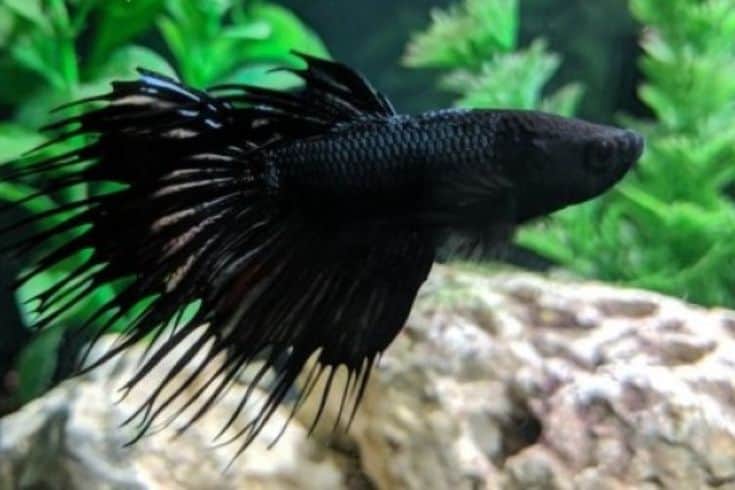
Combtail betta fish are sometimes called the half-sun betta. The tail’s webbing doesn’t extend from ray to ray but dips between each one, giving the tail the appearance of a wide-toothed comb.
Sometimes, the tail develops a rather droopy appearance, which won’t harm the fish but doesn’t look great.
Half Moon (HM) / Over Half Moon (OHM)
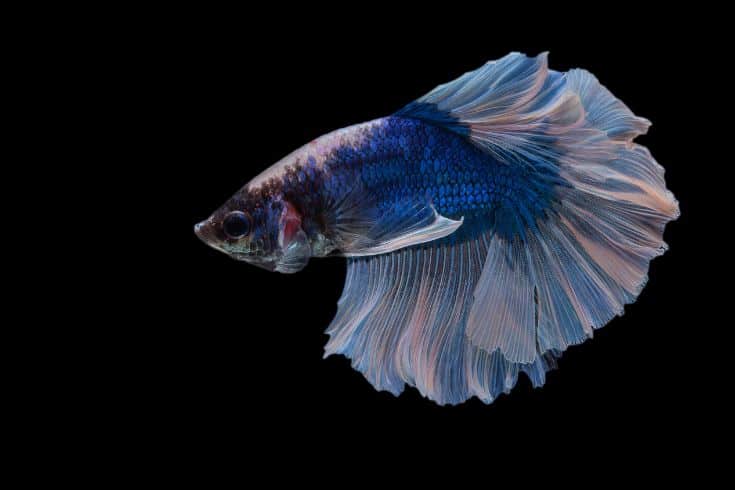
Half Moon bettas are almost identical to the Delta variety. True half moons have a complete 180-degree tail that makes a ‘D’ shape when viewed from the side.
Half Moons are the most common betta type, and you’ll see lots of them for sale in fish stores. There’s also an Over Half Moon type, where the tail extends further than 180-degrees
Delta (D) & Super Delta (SD)
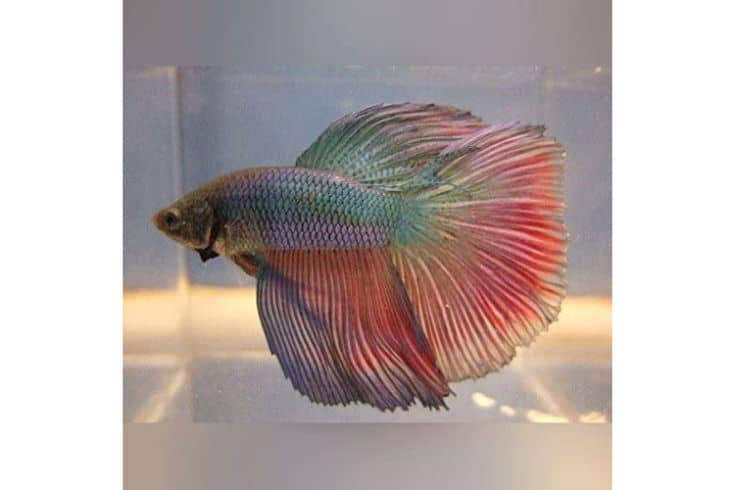
Delta bettas are named for the Greek letter delta, because their tails are triangle-shaped with straight edges when extended. Deltas are often mistaken for the popular Half Moon variety, although the Delta’s tail doesn’t quite extend to 180 degrees.
Super Deltas are similar, but they have a wider tail that extends to almost 180 degrees.
Double Tail (DT)
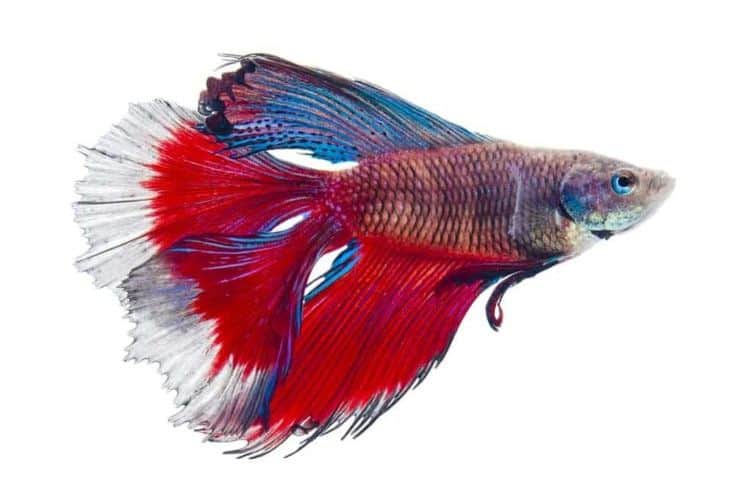
Double Tail bettas are sometimes called Twin Tails, having long, wide dorsal, tail, and anal fins. The tail appears to be two separate tails, hence the fish’s common name.
Unfortunately, the Double Tail is born of a mutation, which means the fish suffer from poor health. So, although your fish might look impressive, he won’t live as long as many of the other varieties.
Plakat Betta
Plakats are not recommended for beginner fish keepers because of their high aggression levels and incompatibility with other fish. In fact, these fish are directly descended from the Siamese Fighting fish line, which is what gives the fish its belligerent nature.
These are not fancy-looking fish, typically being a dull single color and having short tails and stockier, more powerful fighter’s body shapes. Aside from their violent temperament, Plakats are easier to keep in that they are generally healthier and more robust than their long-finned cousins.
Rosetail
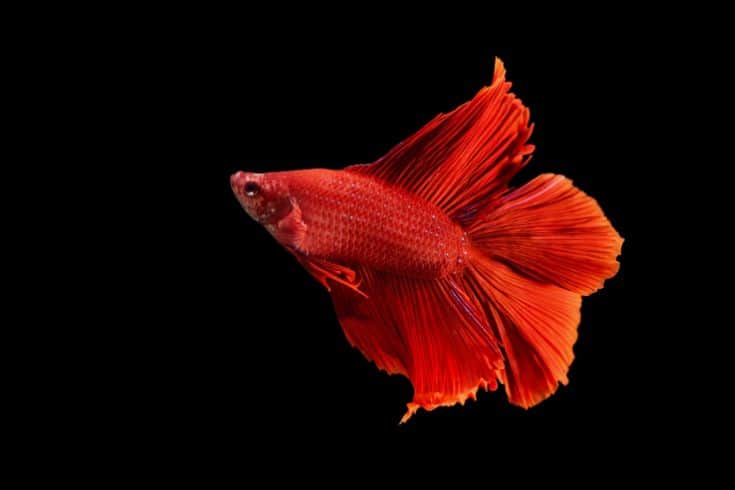
Rosetail bettas are undoubtedly beautiful fish, but are not renowned for their good health due to inbreeding and typically have a shorter lifespan than other betta varieties.
Rosetails have an outrageously wide tail fin, as well as the longest, fanciest anal and dorsal fins in the entire betta family! In fact, the fish resembles an overblown rose bloom.
Feathertail
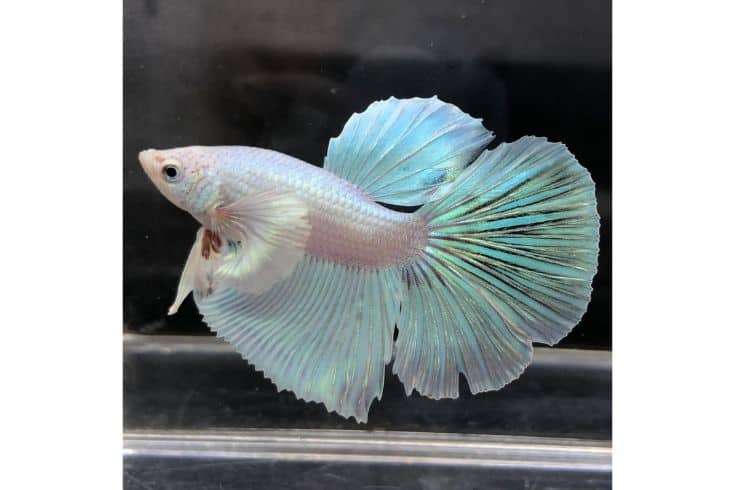
Feathertail bettas are similar to Rosetails, with wide, long, ruffled fins. The finnage has triangular edges, giving the fish a feathered appearance.
Round Tail
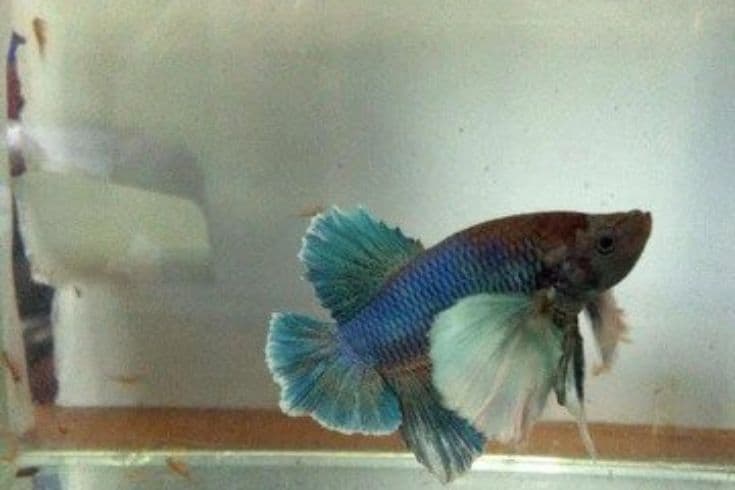
Round tails are similar to Delta and Half Moon bettas and are common, popular fish that you’ll find in most good fish stores.
The fish’s tail has a rounded appearance, hence the variety’s name!
Spade Tail
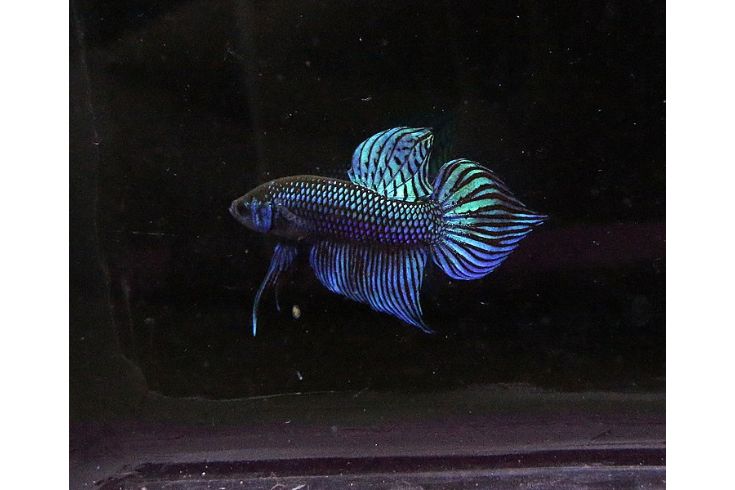
The Spade Tail betta is similar to the common Veiltail, although the tail fin is shaped like a garden spade.
Betta Fish Colors
So, how come betta fish are so colorful?
Since fish pigmentation is a complicated subject, we’ve simplified what happens in layman’s terms.
Pigment Cells Determine Betta Color
There are three main pigment types that exist in special cells known as chromatophores.
- red (erythrin)
- black (melanin)
- yellow (xanthin)
In part, the betta’s color is determined by the combination of those pigments expressed in the chromatophores and by the cells’ depth beneath the betta’s scales.
For example, when the yellow and black pigments are expressed, the fish looks brown. The deeper the chromatophores, the more vivid and darker the fish’s color.
Wild vs. Pet Betta Colors
Wild betta fish are usually not as brightly colored as pet bettas, although there are exceptions.
In wild bettas, the pigment cells constantly change size and shape, changing the fish’s appearance. However, pet betta cells don’t change as much, so their color tends to be much more stable.
Pet bettas only change color or fade when they are stressed or sick, whereas wild bettas only display their most vivid colors when threatened or during the spawning season. That, and the pet betta’s more peaceful nature, is what makes domesticated bettas more popular pets than the wild type.
How Are Color and Scale Patterns Related?
Bettas have cells called iridocytes, which give the fish a gorgeous iridescence and shine. Again, the depth of these cells determines whether the fish has metallic stripes and highlights or even appears almost white.
Sometimes chromatophores and iridocytes combine to create new colors, which is what makes breeding bettas so exciting!
Diet and Environmental Factors Affecting Betta Colors and Patterns
A betta fish’s scale pattern and color depend on its genetics but are also heavily influenced by the creature’s diet and environment.
So, to keep your betta fish looking great, you need to feed him a varied, high-quality diet that contains plenty of protein and keeps his tank pristine. Water temperature is also important, so ensure that your tank temperature is between 75 and 86°F.
Breeding For Color
Breeding solid body color betta fish is pretty straightforward. Simply use male and female fish of the same color, and you should end up with baby fish of the same color as their parents.
However, producing patterned, metallic, or iridescent fish is more complicated. In fact, the process can be somewhat hit and miss, which is what makes breeding bettas so challenging and exciting!
Varieties of Bettas by Color and Pattern
Now, check out this list of all the awesome colors and patterns of betta fish you can choose from!
Albino
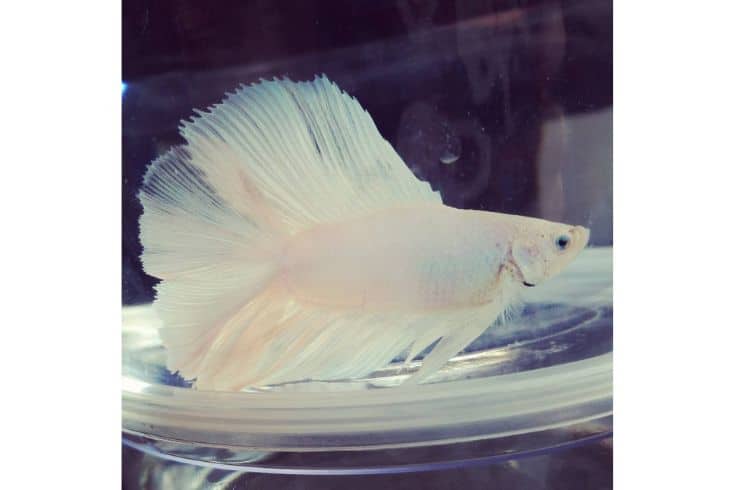
Albino bettas lack any pigmentation, having clear or white scales and fins and pink or red eyes. Often, you can see the fish’s internal organs and muscles through the scales, giving them the appearance of having a pink body.
These fish are incredibly difficult to breed and have a low survival rate, making them extremely rare.
Black
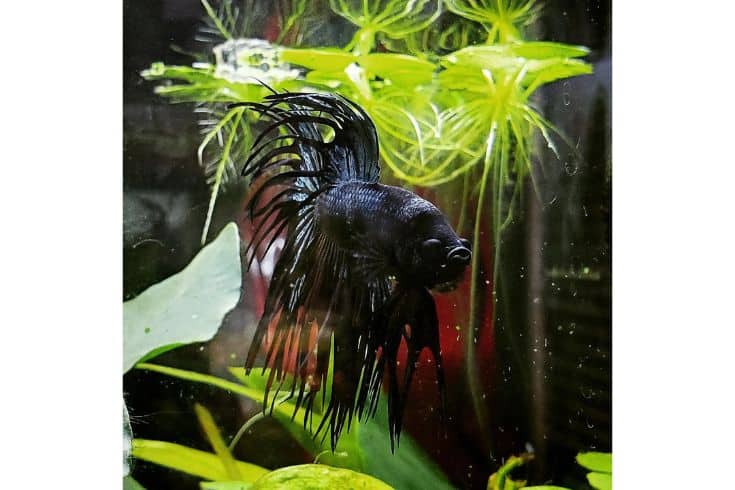
There are several different varieties of black bettas, each with slightly different characteristics.
- Black Melano betta
- Black Lace betta
- Black Orchid betta
- Black Copper betta
With their rich color and beautiful tails, black bettas are just as popular as those with bright colors and iridescent scales!
Clear/Cellophane
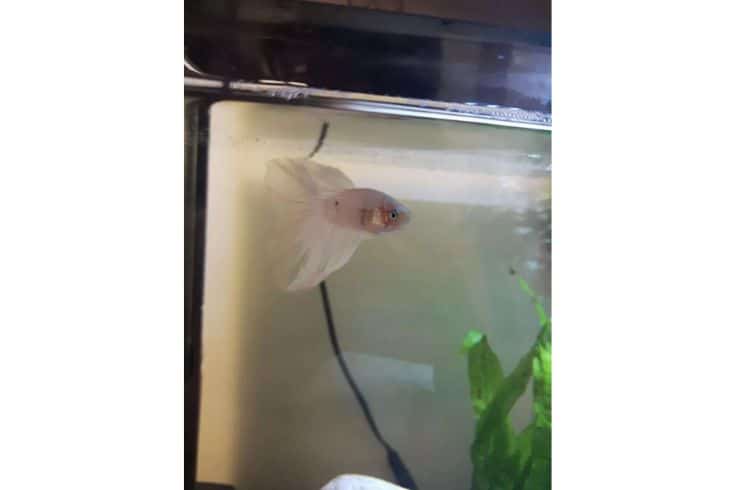
Cellophane bettas have white to translucent scales and solid black eyes. Unlike the Albino betta, these fish have one pigment in their chromatophores that’s not expressed, making the fish appear almost colorless.
Blue/Steel Blue/Royal Blue
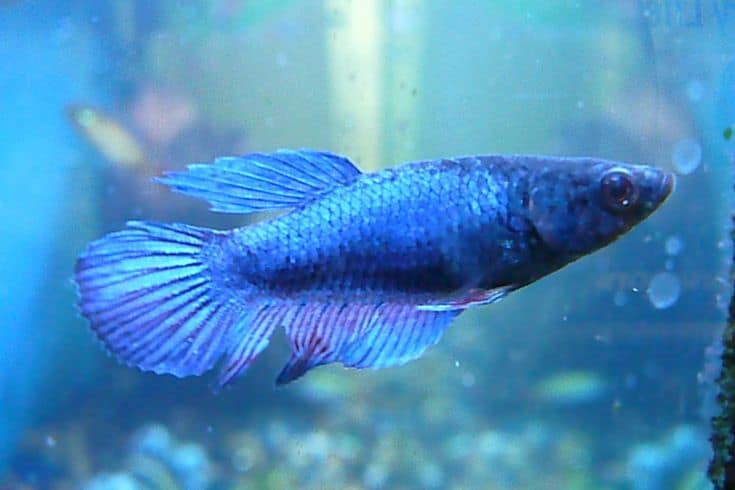
Blue is quite an unusual color in fish, although there are several kinds of blue betta fish. The blue coloration is caused by the shape of the fish’s scales and pigment cells and the way in which they reflect the light.
Chocolate
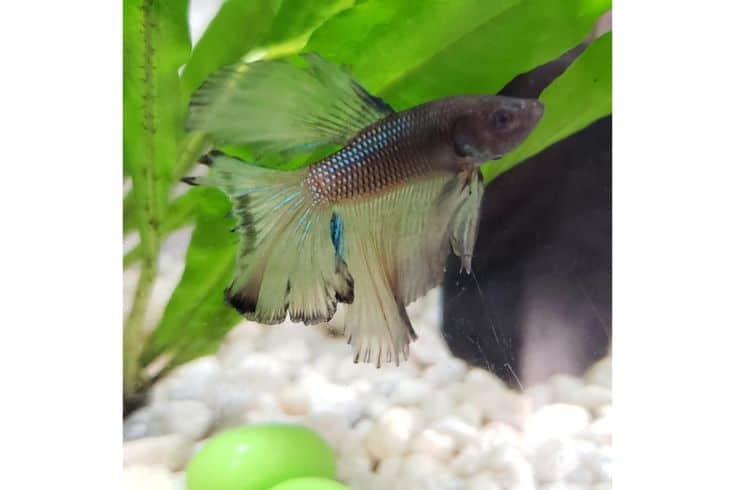
Chocolate bettas have a brown or tan body, fading to an orange or yellow tail and finnage.
Copper
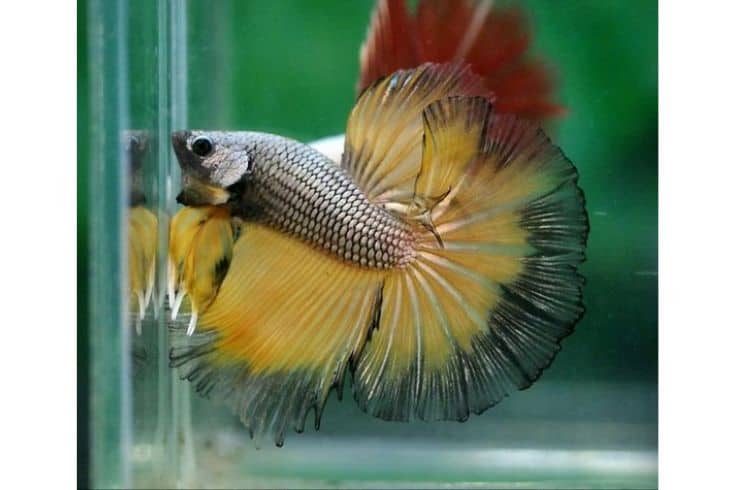
Copper bettas might at first look tan or brown. However, the fish have reflective metallic fins and scales that sparkle under bright lighting.
Red
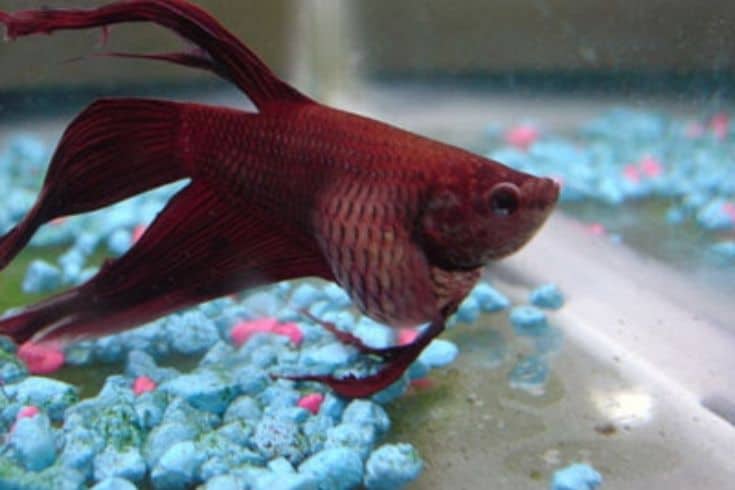
Red is a very common color in fish, and you’ll see a lot of red betta fish for sale in fish stores. In fact, my first two bettas were bright red betta splendens!
Green
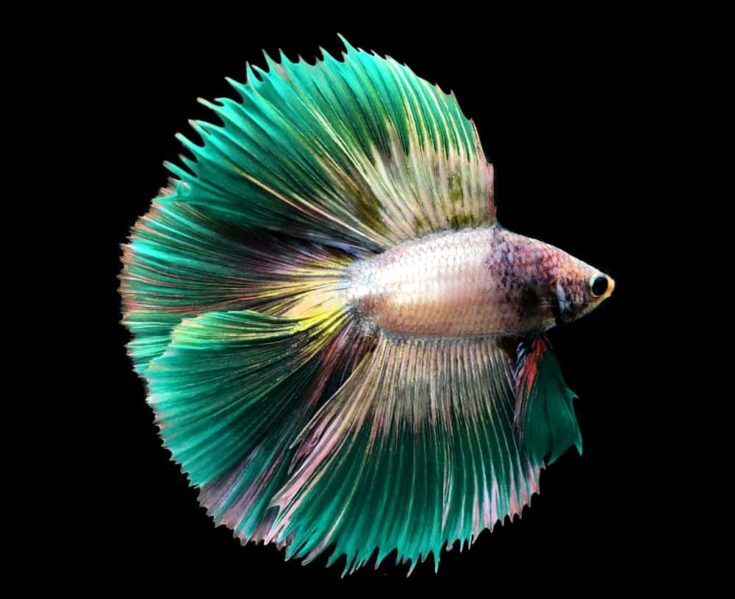
Green betta fish sometimes appear black, blue, or turquoise, and almost all specimens have a metallic overlay, too.
Mustard Gas
Mustard gas betta fish are usually bi-colored with a green or blue body that shades to fins of an orange or yellow shade. These popular freshwater fish are generally readily available in good fish stores.
Opaque/Pastels
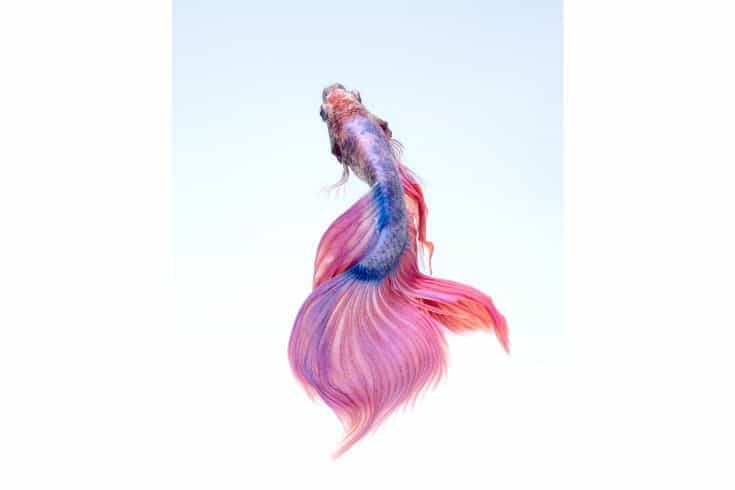
Pastel or opaque betta fish have pastel-shaded bodies and fins with a white wash that overlays the main color, giving the fish a pale look.
Orange
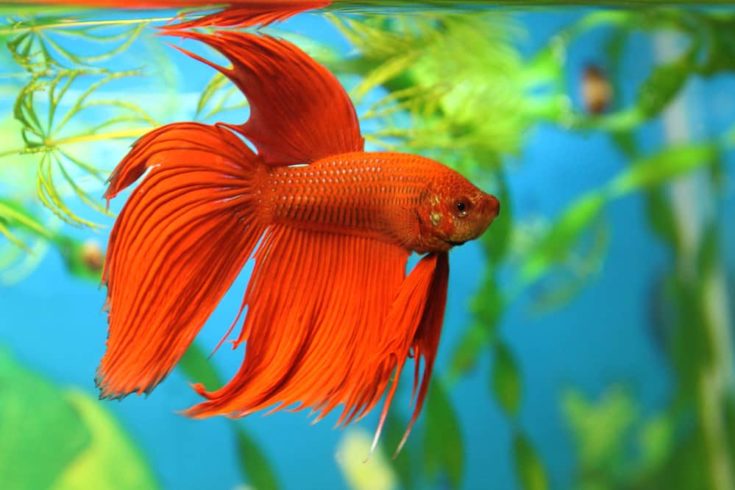
Orange bettas are something of a rarity, making these vibrant tangerine-colored fish highly sought after.
Rose Petal
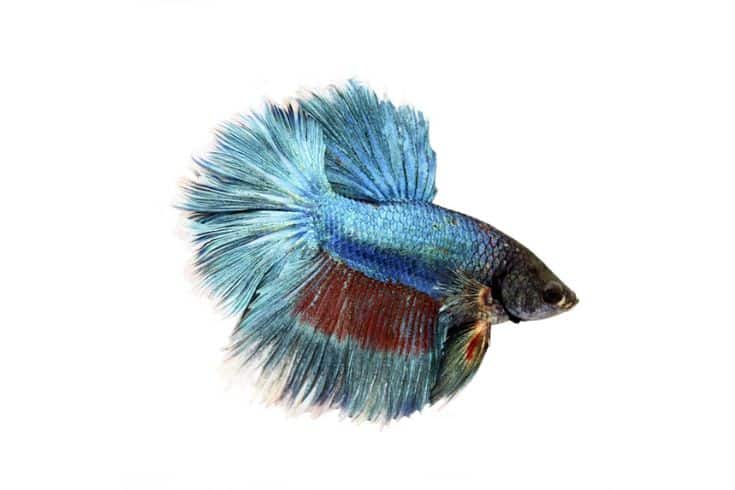
Rose Petal bettas are usually white or cellophane fish that appear as pale pink because you can see their internal tissues through their skin.
Purple/Violet
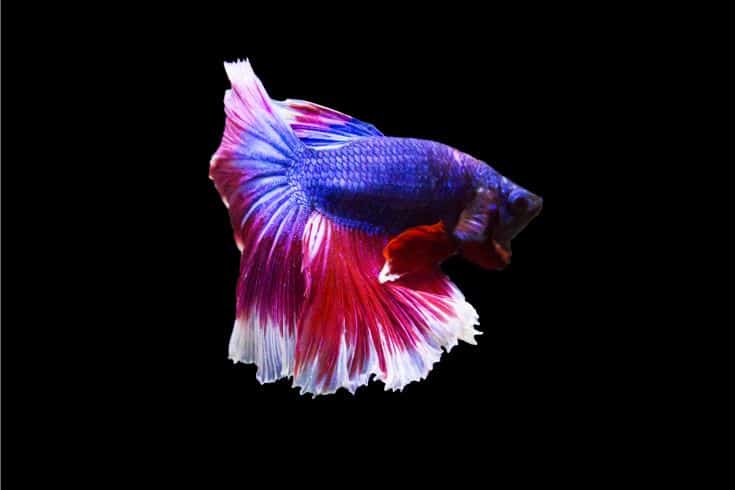
True purple betta fish are so rare that you’ll most likely never see one! Consequently, when a purple betta does make it onto the market, the price is incredibly high.
Turquoise
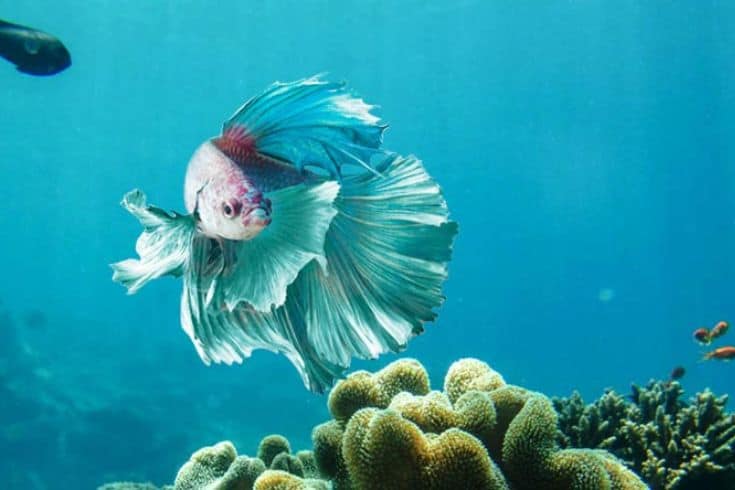
Turquoise bettas are essentially green fish with a turquoise tint.
Pink
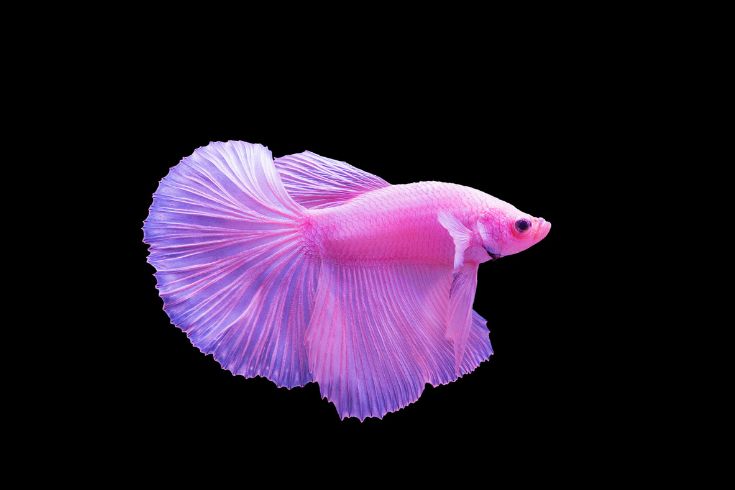
Pink bettas are incredibly rare fish that are seldom seen for sale. Often, fish described as “pink” are actually white bettas or clear, and it’s the fish’s internal organs that give them a pinkish tinge.
Wild-Type
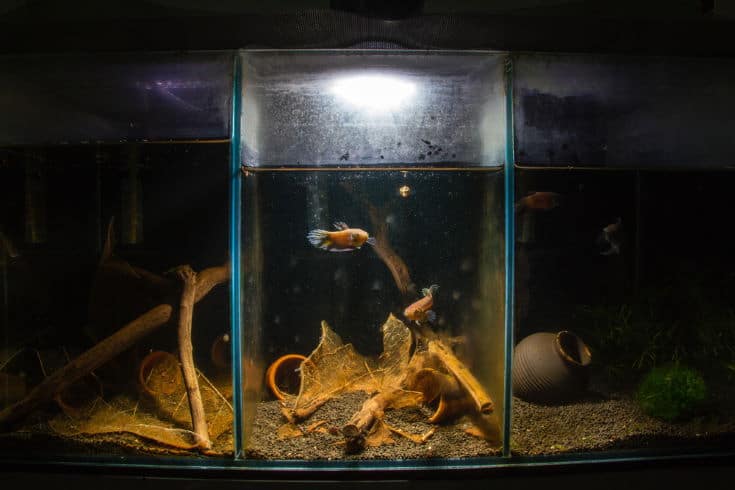
Wild-type betta fish are usually dull or dark green or brown, lacking the vibrant colors of the hybrid varieties.
Yellow & Pineapple
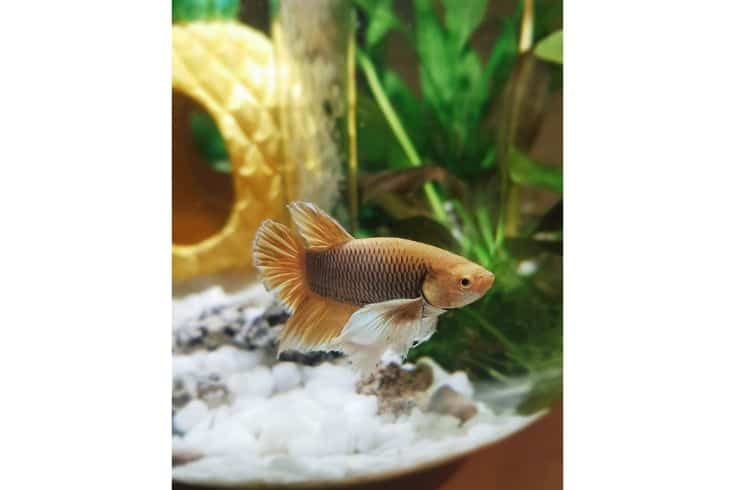
Pineapple bettas have bright yellow bodies and fins. These fish are extremely difficult to breed, so are quite rare.
Orange Dalmatian
The orange dalmatian betta fish is bright orange with vibrant orange or red spots along the fins.
Patterns and Scale Designs
In addition to those gorgeous color morphs, you can find bettas with different patterns and scale designs. Check out these beautiful Siamese Fighting fish!
Bi-Colored
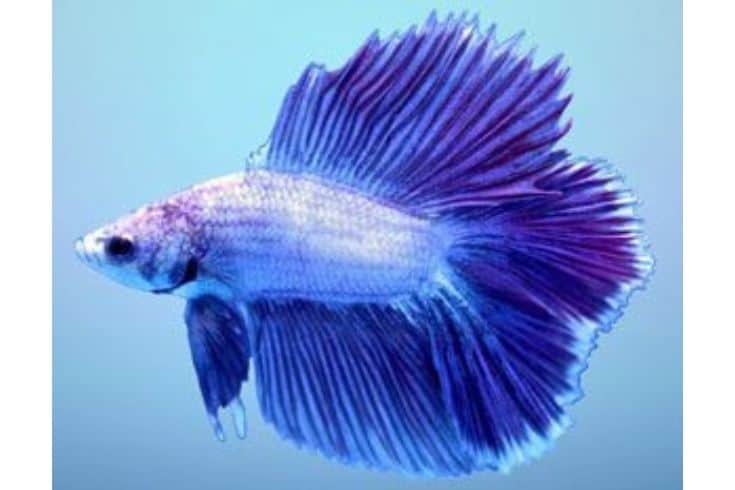
A true bi-colored betta has a body of one color and fins of another, although some hobbyists use the term to describe fish that have two colors.
Butterfly
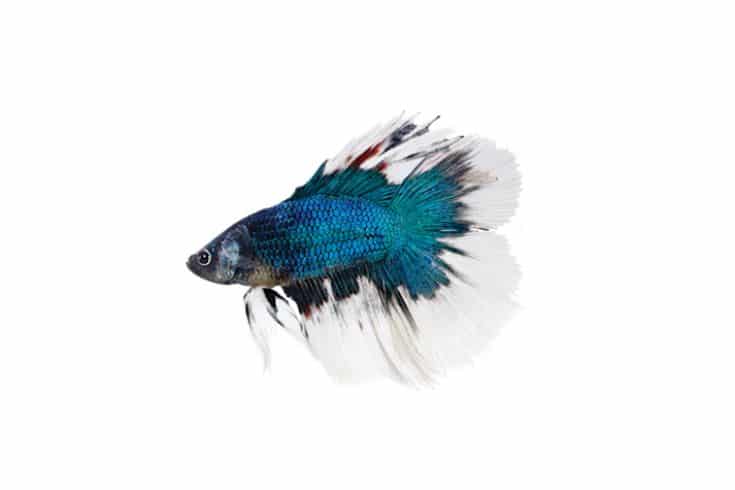
Butterfly bettas are solid colored with fins shading to cellophane. The line between the color and the cellophane should be clearly defined, and the fish can be two or three colors, provided one-third of their body shows each color.
Cambodian
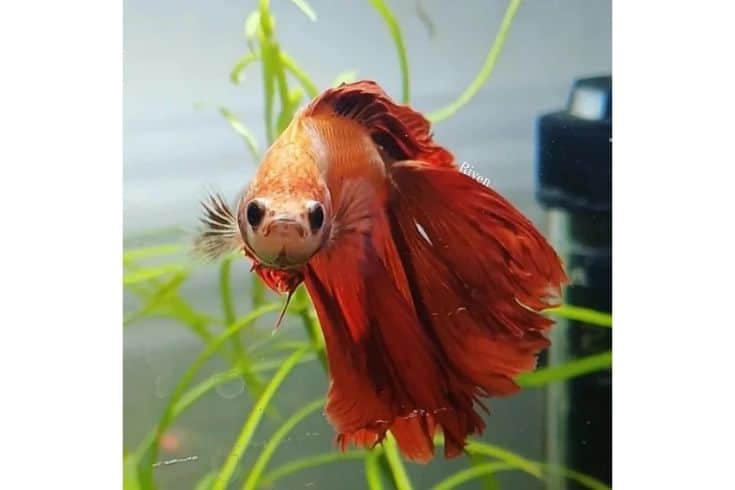
Cambodian bettas are bi-colored fish with deep red fins and a pale pink or white body.
Dragon Scale
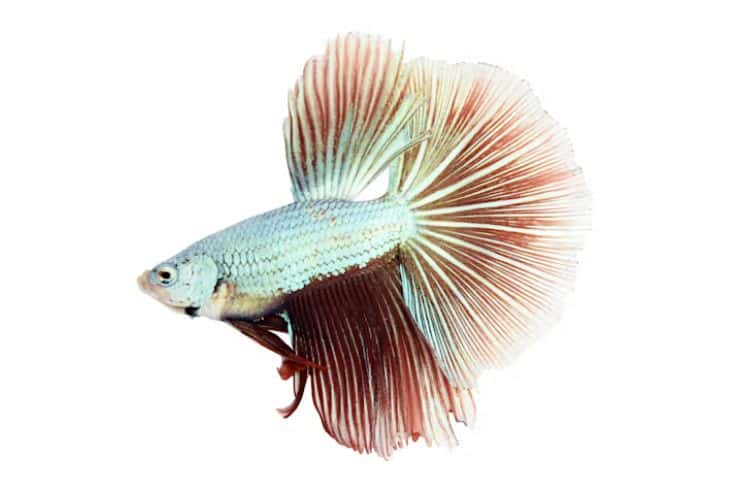
Dragon scale bettas have thick scales that are clearly visible on their head and body, giving the fish the appearance of being covered in armor or jewels.
Marble
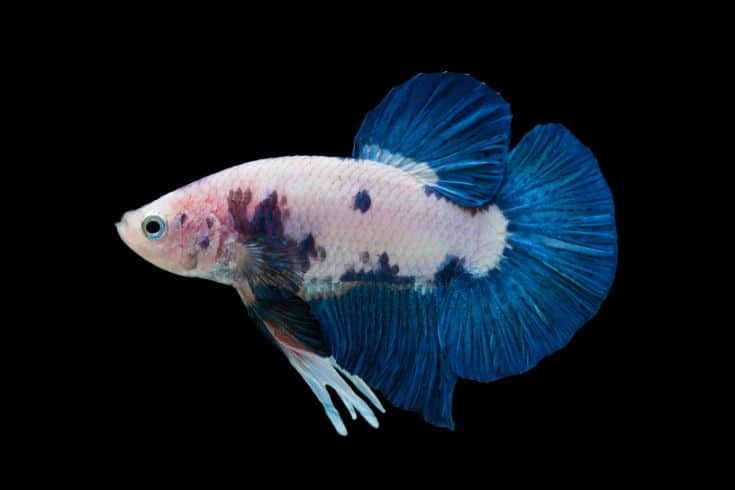
Marble traits don’t materialize immediately but appear randomly as the fish matures. A Marble betta’s primary color darkens, and patches or blotches of color appear on the body and fins.
Mask
Masked bettas have a head the same color as their body. Generally, a Mask betta has a head that’s a different color to its body unless the fish is bred for the half-mask or full-mask gene.
Multi-colored
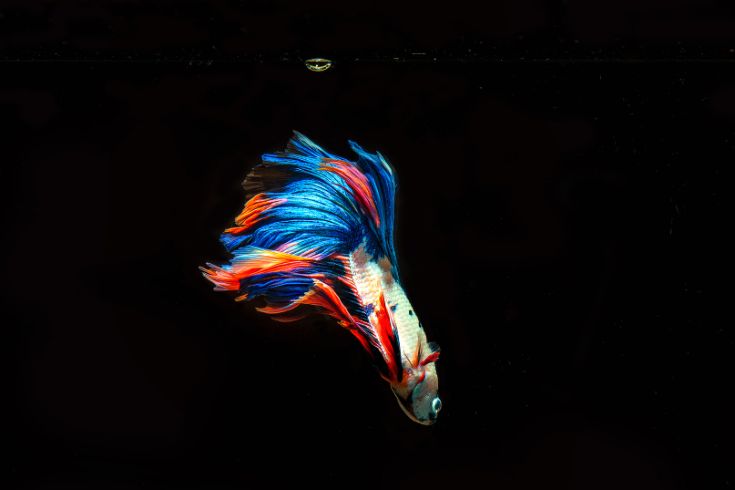
Multi-colored betta fish have a random mixture of at least three different colors.
Solid
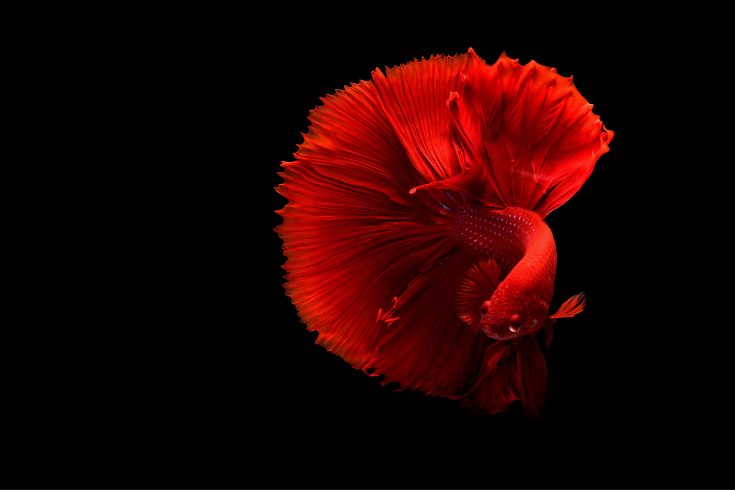
Solid-colored betta fish are one single intense color along their body, where the pigment is deep and close to the fish’s muscles.
Solid bettas make a good choice for breeding stock if you fancy trying your hand at betta breeding.
Piebald
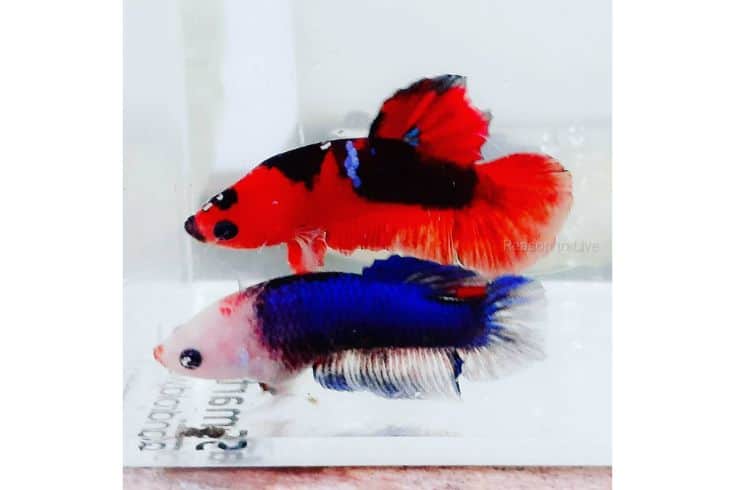
Piebald bettas have white or flesh-colored faces and darker bodies, but they don’t carry the albinism trait.
Wild Type
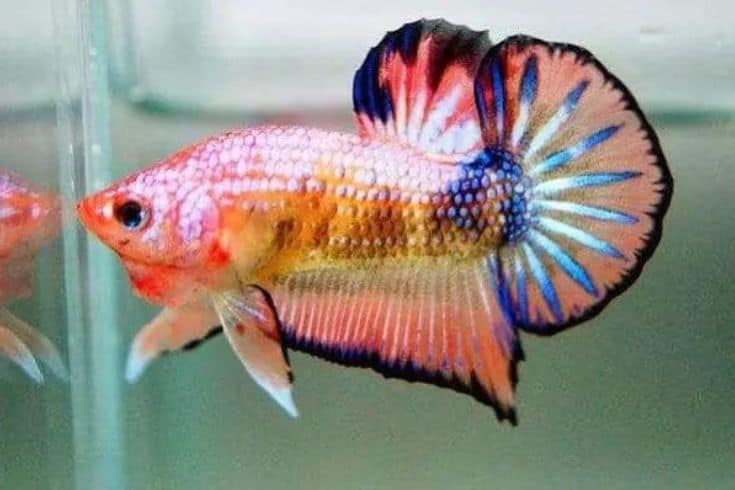
Wild-type bettas tend to be darker colored and less fancy than domesticated specimens.
Betta Fish Wild Species
There’s a large group of bettas that are classified as Wild kinds of betta fish. These fish are strong swimmers with shorter tails and lack the variety of colors offered by their hybrid counterparts.
Emerald Green Betta
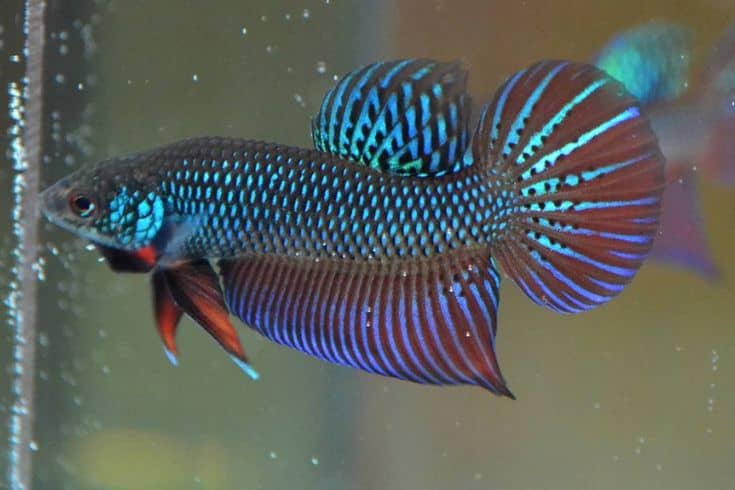
Emerald Green bettas are also known as betta smaragdina or Mekong fighting fish. The fish’s blue and green body colors come from the interference and refraction of light from hexagonal crystals that are less than .05 micrometers.
Peaceful Betta
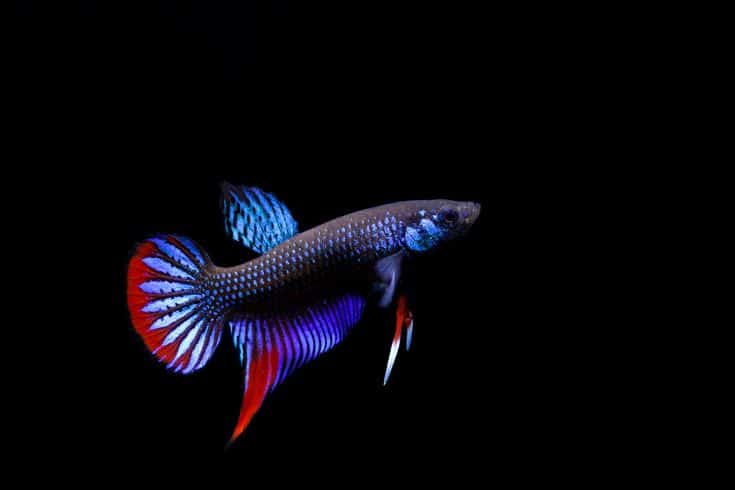
The Peaceful betta, Crescent betta, or betta imbellis is so-called as it’s thought to be less aggressive than other species of wild betta fish.
Betta Channoides
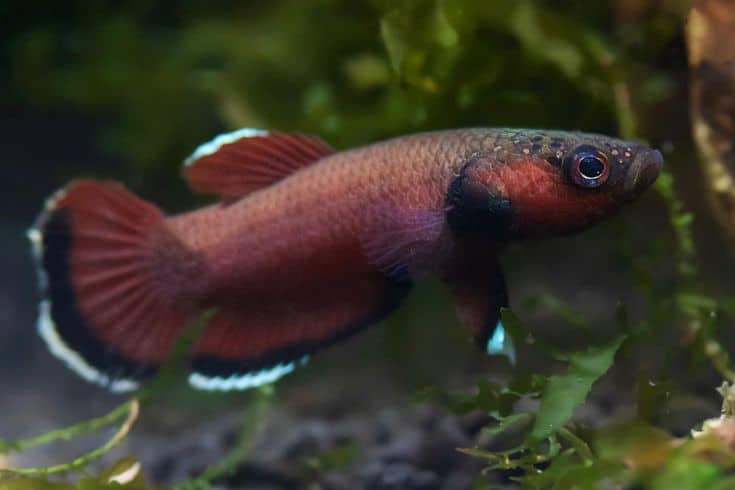
Betta channoides is endemic to the island of Borneo in Indonesia, where the species is only found in Kalimantan Timur province. Here, the fish live in the acidic waters of shallow blackwater forest streams.
Spotfin Betta or Betta Macrostoma
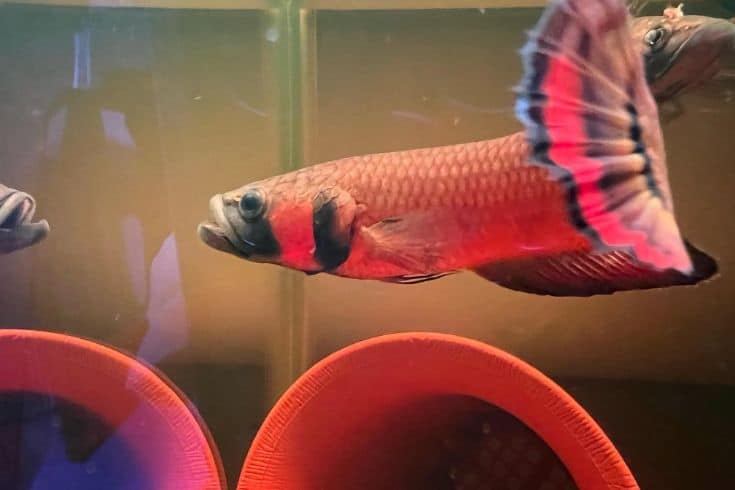
Betta macrostoma comes from shallow, slow-moving rivers and streams in Borneo. This species can reach 4 inches long in captivity, making the Brunei beauty or Spotfin betta one of the largest species.
Betta Albimarginata
Betta albimarginata comes from Borneo, specifically the Indonesian province of Kalimantan Timur, where the fish live in shallow, heavily vegetated forest streams. These small bettas only grow to just over 1 inch long and are mouthbrooders.
Krabi Betta or Betta Simplex
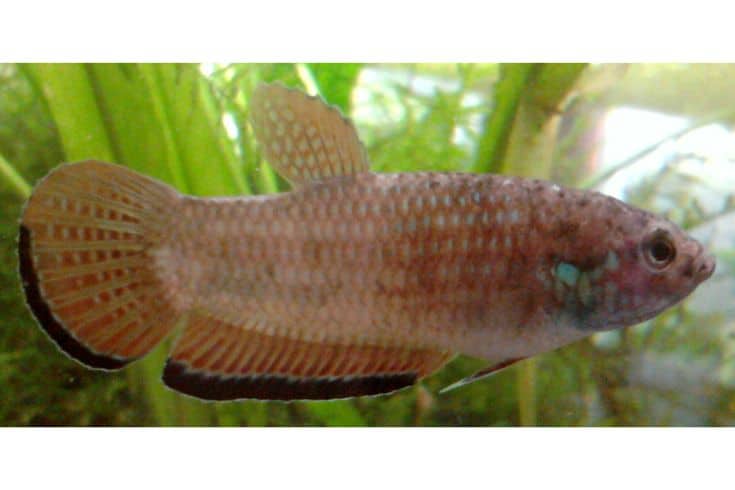
Krabi bettas are mouthbrooders endemic to Krabi Province in Thailand, where it inhabits shallow wetlands and karst springs.
These bettas are currently listed on the IUCN Red List as “Critically Endangered” due to the degradation of their restricted habitat by farming and pollution. Unfortunately, the species is also overexploited for the pet trade.
Betta Pugnax or Penang
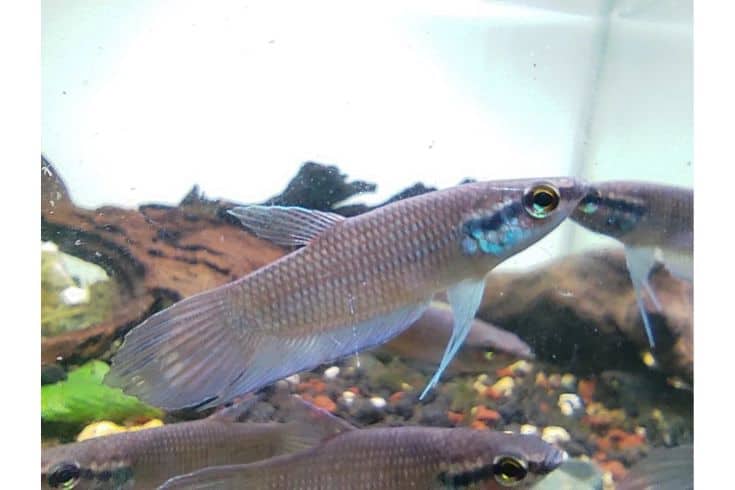
The Penang or Pugnax betta fish is native to Malay, Thailand, the Riau Islands, and Sumatra and has recently been introduced to Guam.
Betta Picta or Spotted
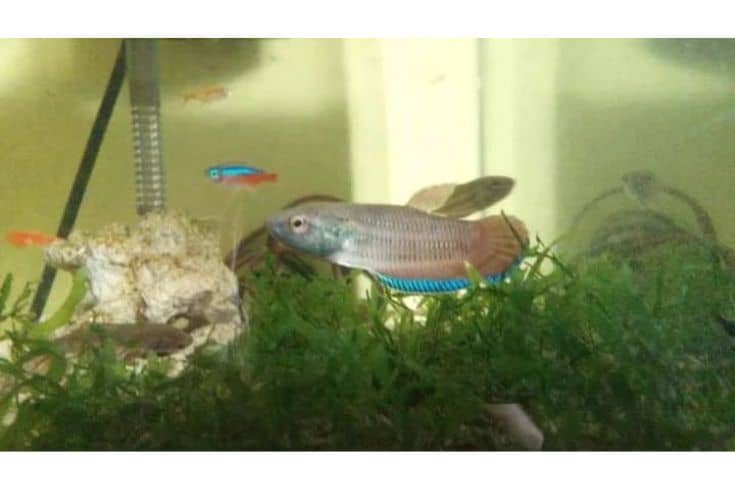
The Spotted betta is a mouthbrooder that’s also called the Java Fighting fish. This betta species is endemic to Indonesia, where it lives in the mountain streams of Sumatra and Java, where the water is cooler at 72 to 75° F.
Betta Mahachaiensis
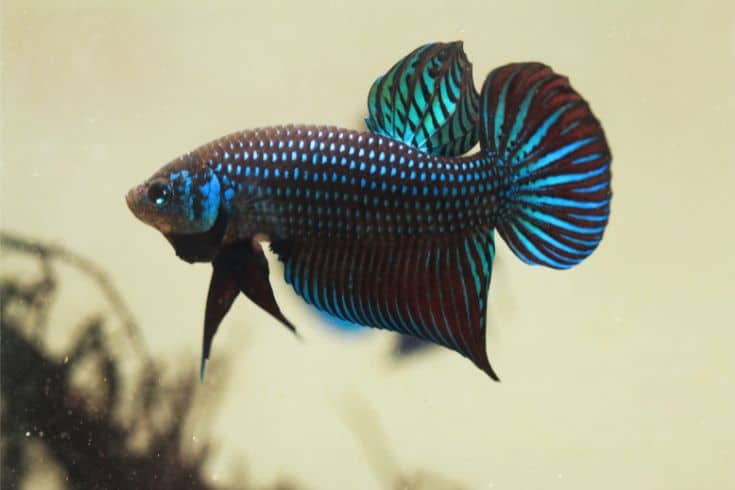
Betta mahachaiensis are bubble-nesting bettas that are native to the Gulf of Thailand. These fish inhabit stagnant swamps, pools, and ponds, and they can also live in brackish conditions.
Betta Brownorum
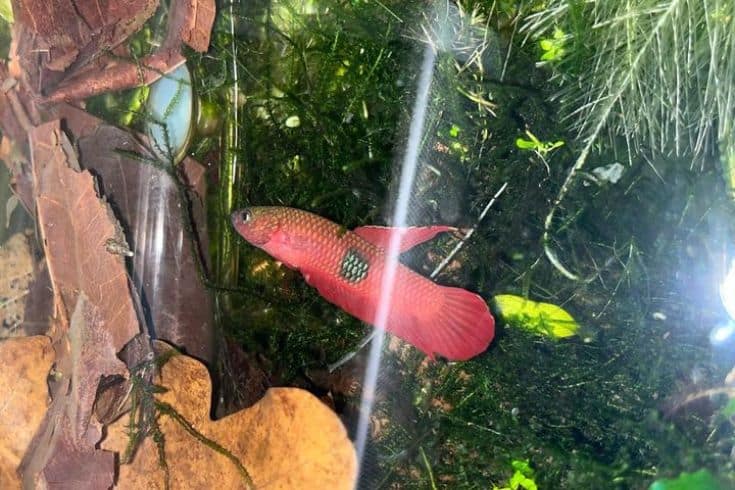
Betta brownorum comes from Borneo in Indonesia and Malaysia, where the fish inhabit the very shallow waters of peat swamps.
Betta Pallifina
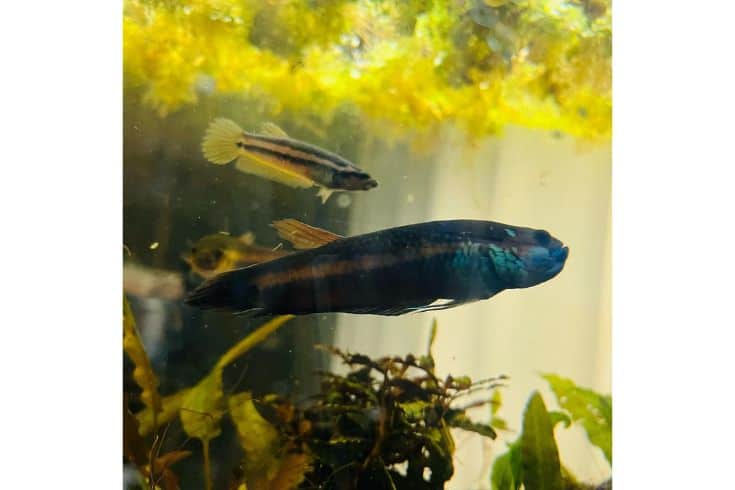
These gorgeous wild bettas come from Borneo. Unlike many wild bettas, betta pallifina is vividly colored tan with striking blue and green iridescence and metallic gold or sky blue scales adorning the gills.
Betta Rutilans
These red-colored betta fish come from Indonesia, where they live in dimly lit peat swamp forests and blackwater streams.
Betta Persephone
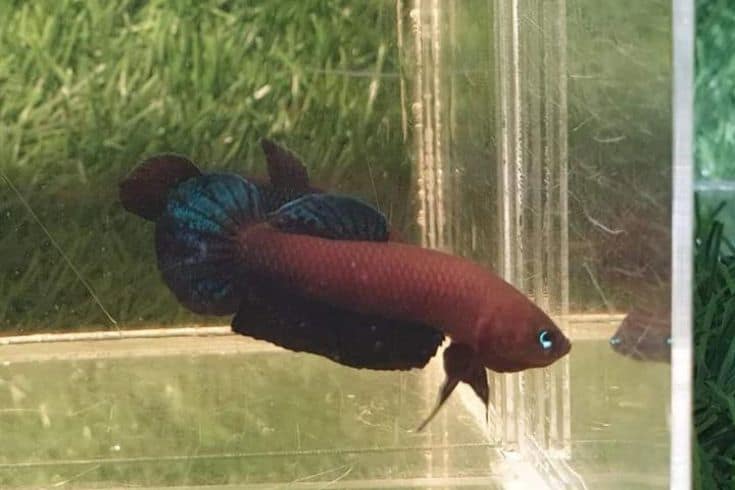
The blue-black colored Betta Persephone is only found in Johor, Malaysia.
Betta Burdigala
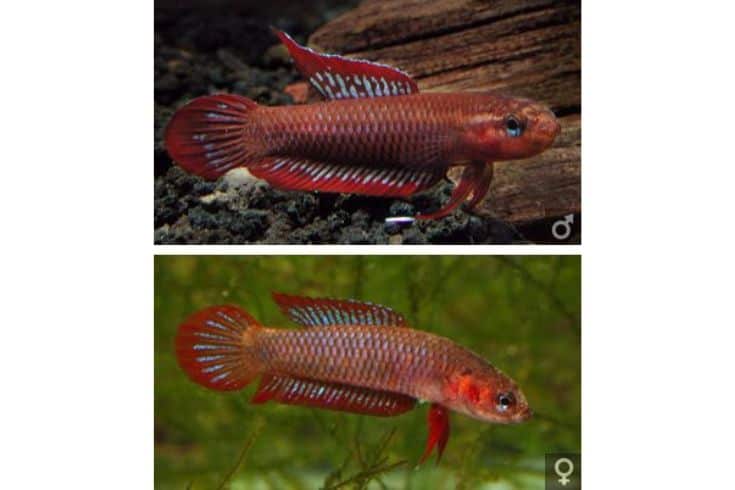
Betta burdigala are endemic to Bangka Island in Indonesia, where they inhabit peat swamps.
Betta Strohi
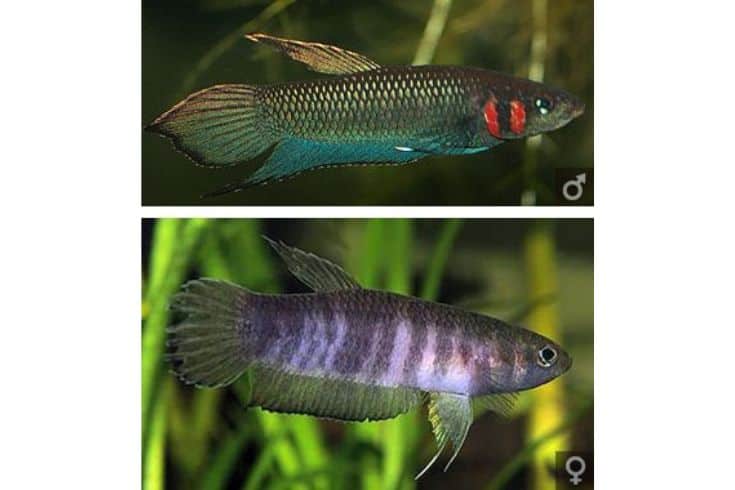
These wild betta fish come from Indonesia and are named after the German missionary and priest who discovered them.
Betta Miniopinna
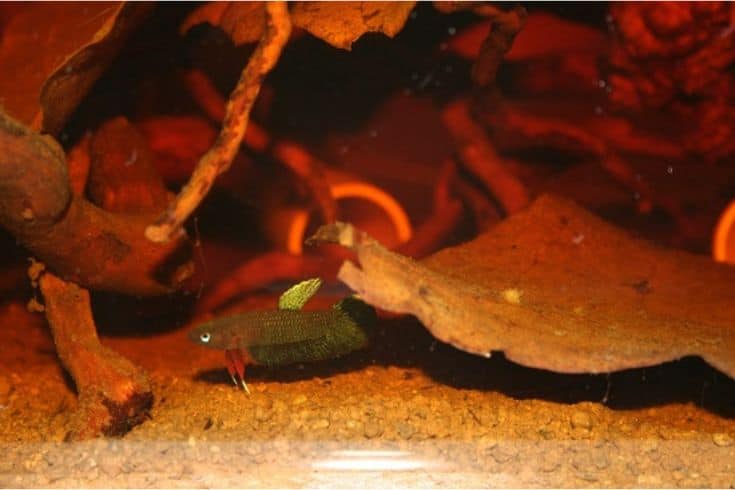
Betta miniopinna is a species of betta fish that’s endemic to Bintan Island in the Riau Archipelago, Indonesia.
Betta Mandor
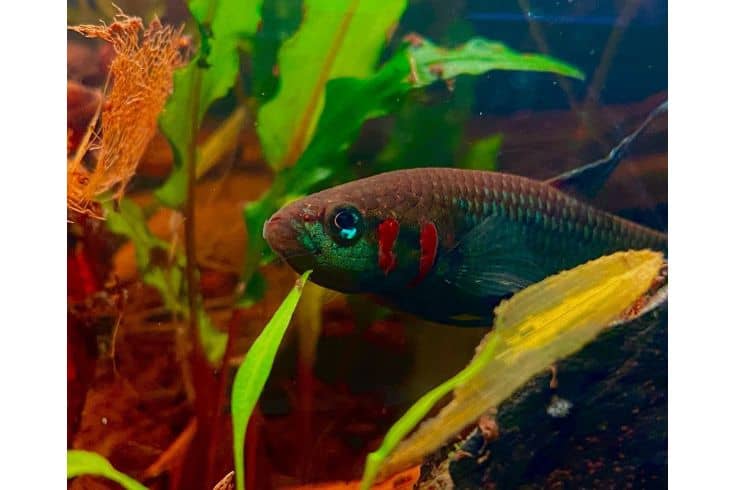
Betta mandor comes from Borneo, specifically the Kapuas Basin in Kalimantan Barat province. These bettas are currently listed as “Endangered” on the IUCN Red List.
Betta Chloropharynx
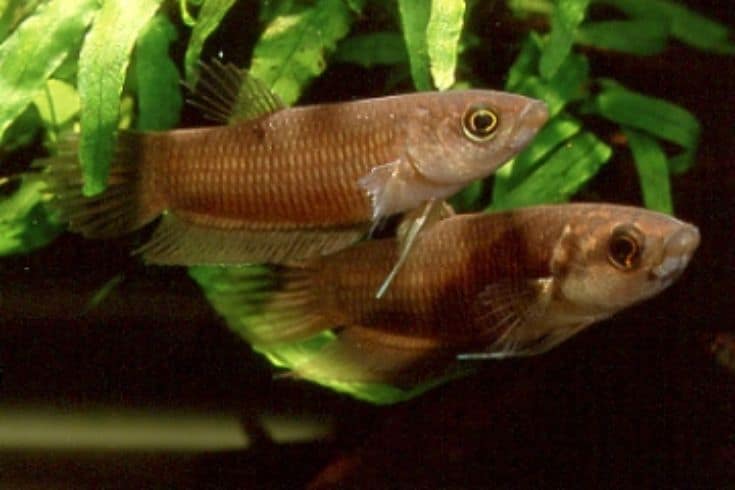
Betta chloropharynx comes from Bangka island, Indonesia, inhabiting the shallow blackwater pools in secondary forests.
Betta Hipposideros
These betta fish inhabit the blackwater swamps of Malaysia, ranging as far as the Riau Archipelago.
Betta Spilotogena
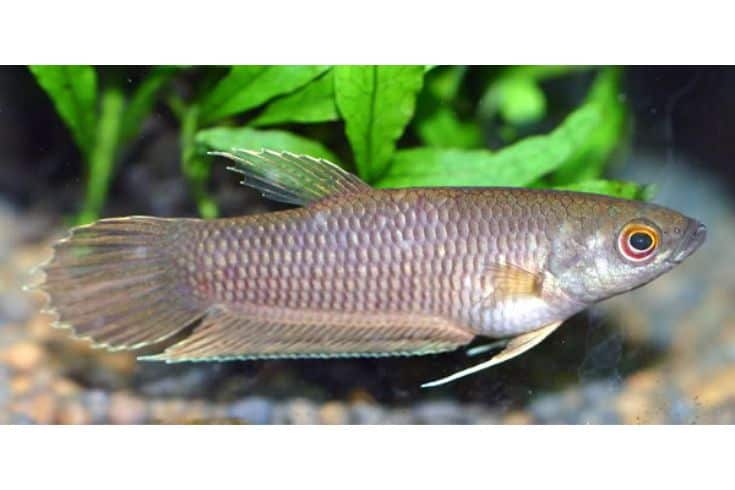
Betta spilotogena comes from the islands of Singkep and Bintan, Indonesia, where the fish inhabit heavily vegetated streams and streams.
Betta Tomi
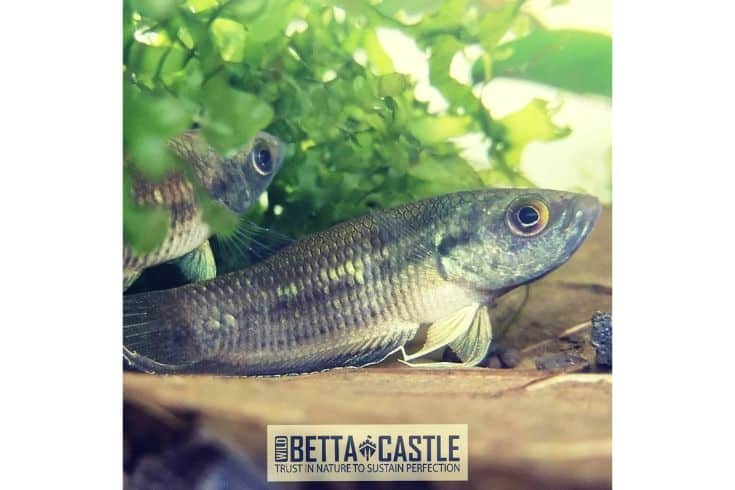
Betta tomi is only found in Johor on the Malaysian Peninsula, having gone extinct in Singapore. The fish live in heavily-shaded shallow streams, where the substrate is covered with lots of debris and leaf litter.
What Makes Bettas Such Great Pets?
Betta fish make fascinating pets!
The fish are relatively easy to care for, they can live in small tanks, and they can even learn to do simple tricks.
I taught my pet betta, Barry, to take food from my hand and to follow my finger along the glass of his tank. He really got to know me and would hurry to the water’s surface when I came close to the tank, hoping for treats!
Where It All Started
Wild betta fish are generally not as brightly colored as their domesticated cousins and don’t have the glorious fancy finnage.
Bettas come from Thailand, where they live in stagnant ponds, ditches, and paddy fields. Several hundred years ago, farmers discovered that those wild fish displayed highly territorial behavior and belligerence toward intruders.
Local people began breeding strong, powerful bettas specifically for fighting. Spectators would wager cash on which betta would win, and Siamese Fighting fish contests became popular events across the country. Even the King of Siam owned fighting fish!

Mutations occurred during the breeding of these combative fish, producing brightly-colored male specimens with longer fins and tails. Fish fighting is now illegal in most countries, and selective breeding of fancy bettas is now big business instead.
Natural Habitat
Wild bettas come from parts of Malaysia, Thailand, Vietnam, and Cambodia. The fish live in rice paddies, small streams, canals, and river basins; some species inhabit brackish conditions.
Wild bettas typically defend a territory of around three square feet, preferring heavily vegetated areas where the water is warm and slow-moving.
Tank Setup
Betta fish can live in small nano tanks, although they must have proper filtration and heating to remain healthy.
The water flow should be low, so you might need to baffle the filter outflow pipe. Water temperature should be stable at 76° to 85° F with a pH of 6.8 to 7.5.
Bettas like plenty of places to hide and rest, so provide plenty of caves, overhangs, driftwood, and lush planting. Floating plants can provide dappled shade and offer excellent spots for bubble nest building.
FAQs
Here are the answers to a few of the most commonly asked questions about betta fish types

Q: Which type of betta is best?
A: Most betta owners choose fish with spectacular tails. However, short-tailed Plakats tend to be the healthiest type, and their short tails cause fewer problems than flowing ones.
Q: How many breeds of betta fish are there?
A: There are thought to be 73 different betta varieties.
Q: Which betta is the most costly?
A: The record for the most expensive betta fish ever sold is $1,530, which was paid at auction for a fish with the colors of the Thai national flag.
Q: Which color betta fish is lucky?
A: In China, red, orange, and gold betta fish are considered the luckiest.
Final Thoughts
Did you enjoy our guide to the myriad forms and finnage of the fabulous betta fish? If you did, please share the article before you go!
As you can see, bettas come in so many different colors, patterns, and tail types that it’s almost impossible to choose your favorite. But that’s what we want you to do!
Tell us your favorite variety of betta fish in the comments box below, and why not send us a picture of your pampered pet?
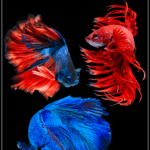
Good one ♥️
Thank you for all of this information. I recently adopted three Bettas and was curious as to the different types. I *think* I have a bi-colored of sapphire blue and deep green half moon (Obi-Wan Kenobi), a mustard gas veil tail (Wrathion), and an albino/white Delta (Gandalf). Your information helped a lot to answer my curiosity. Thank you again! Have a lovely day!
I’m doing research for Betta fish inspired character designs and this article has been so useful I could cry. Very well written and VERY informative. Thank you!!
This article is highly informative .. but still I don’t know which type of betta I am having?can you help me?
Hi Rihan!
I’d love to help you identify your betta, but I’ll need a little more information. Tell me about your betta and describe them, if you can! Is it a male or female? What color(s) do they show, and on what parts of the body? Do they have any unique markings or patterns to their colors? What shape is your betta’s tail and top (dorsal) fin, and are they long, short or in between?
The truth is, not all bettas fall neatly into a specific type or category, which is why breeding show-quality bettas is such a specialty. Many breeders are also introducing other wild-type fish to their lines and thus creating entirely new and never-seen before types of bettas! It could very well be that your betta fish is one of these unique fellows that doesn’t fall into any specific category.
Great article! I hadn’t seen any discussion of health per species so was just planning on getting a pretty one but now I will 100% go for one of your recommendations
Thank u very much for another knowledge that u given 2 us😃
What an amazing article. What is the best type of tank to keep them in?
Hi, thank you for making this information available to us fish knowledge seekers. My question is if I wanted to breed my male to get the colors and patterns he has, would I need a female with similar colors and patterns? Or does it not matter in the Betta fish world?